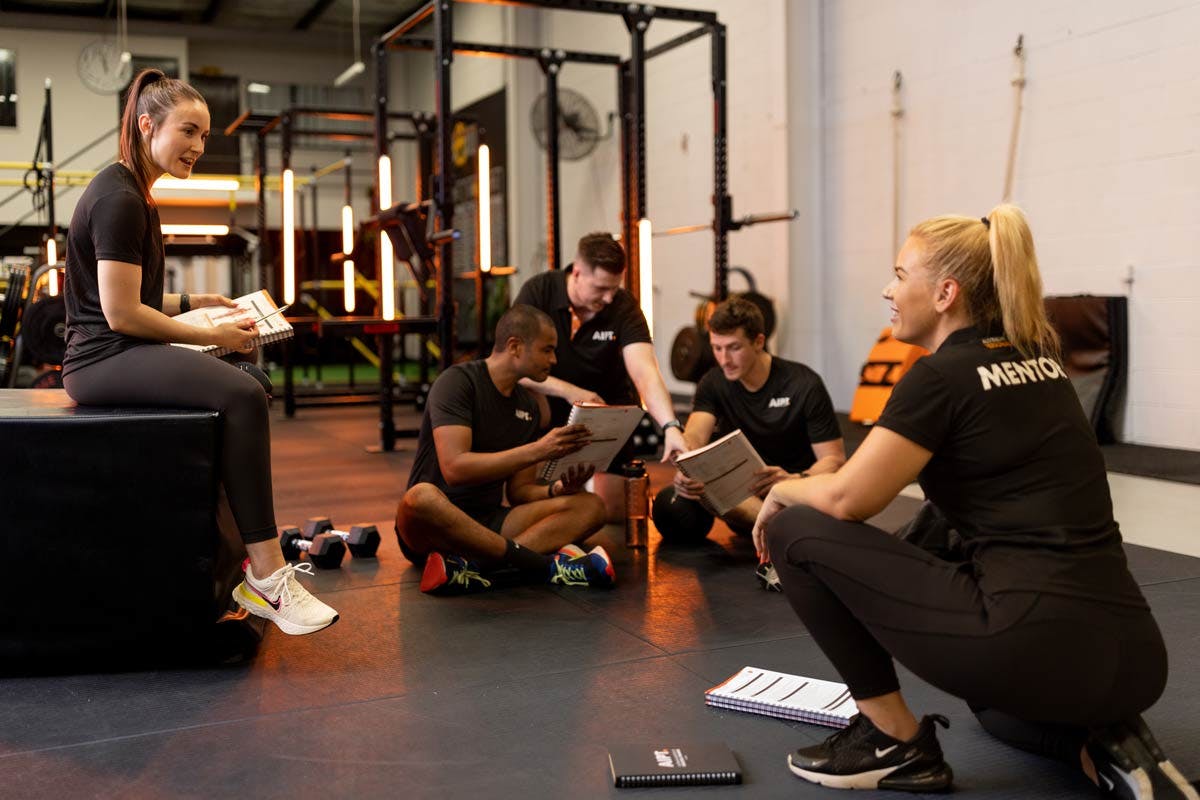11 Nov 2021
How Exercise Improves Mental Health for PT Clients
Overview
Whether you are studying or working in the field of personal training, you should already be aware of the positive effects exercise has on the human body and mind.
From improved weight management to lowering the risk of heart disease and type 2 diabetes, exercise provides a wealth of benefits. Then there are also the mental benefits of exercise.
However, if as a personal trainer, you find that a client is struggling mentally, how do you go about encouraging them to exercise when they are at a low point in their life? After all, exercise and mood are inextricably linked. The best way to help clients that are stressed is to better inform yourself about different mental health conditions, and how your clients may have difficulties because of them.

Exercise and mood
Mental illnesses are conditions diagnosed by a doctor. They include generalized anxiety disorder, depression, bipolar disorder, eating disorders, post-traumatic stress disorder, and many others. No amount of exercise will cure these conditions; however, exercise can be part of a plan to control them. Mental health, by comparison, concerns itself with the emotional and psychological states of a person. A person may feel stressed and show other outward signs of poor mental health, but they may not necessarily be suffering from one of the previously mentioned mental illnesses. If a client of yours is suffering from a mental illness, it is best that they discuss this with their doctor – however, if they have poor mental health, this is something that you can help them with using mood boosting exercises.
The first thing you will need to do is identify the signs that a client may be having a difficult time. We’ll touch on two of the most common
Working with anxiety
Anxiety disorders can leave your clients feeling nervous, restless and tense, and if pushed too far they may experience a panic attack. Common signs of anxiety include:
Feelings of danger, panic, or dread
A rapid heart rate
Rapid breathing, or hyperventilation
Increased or heavy sweating
Trembling or muscle twitching
Weakness and lethargy.
If you suspect or know that your client has an anxiety disorder, one of the best things you can do is simply check in on them and see how they are feeling. If you find that the client is particularly anxious before you begin a session, you should plan exercises that are less stressful and more predictable.
There are a number of aerobic mood-boosting exercises that are great for people with anxiety – these are preferred over weight training, as they serve to raise the heart rate. You could set your client up on a bike, and of course, brisk walking or jogging is also recommended.
Working with depression
Depression is a sinister mood disorder that causes frequent sadness and general loss of motivation, which can make exercise difficult for those who suffer from it. A client that suffers from depression may very well recognize the emotional benefits of physical activity, but be unable to exercise due to lack of motivation or feelings of helplessness.
Common signs of depression in clients include:
A hopeless outlook
Loss of interest
Increased fatigue and sleep problems
Anxiety
Changes in eating and weight.
Keep an eye out for these symptoms – they may come and go in cycles or be consistent.
When it comes to mood-boosting exercising for clients with depression, just about any form of exercise can be beneficial. Running however is an excellent exercise, as its repetitive nature can have an almost meditative effect on the brain.
Whatever your client’s mental health state, it’s important to remember to be empathetic. Also, if your client is comfortable enough to open up and discuss their mental health with you, it’s likely that they find your training sessions to be a useful escape mechanism.

Adapting client exercise plans
A personal training session doesn’t always need to be a gruelling workout, especially if your client’s mental health is not doing well. Instead, consider a long walk instead of a focused workout – whatever helps them to get outside and get moving. This increases dopamine levels in the brain. Dopamine is a neurotransmitter created by the body and is responsible for allowing us to feel pleasure, plan, think and function, and is therefore the link between exercise and mood.
During this walk, you can pause at certain intervals and add in some exercises such as push-ups, jumping jacks, planks, lunges and sit-ups. This simple addition can provide impressive mental benefits and can be further supported by adding in exercises that your client enjoys. For example, if they like to lift weights, a basic weight lifting rotation can be added in.
The most important thing is to get your client moving: once they do, the positive energy will begin to flow, and the rest of the session will not be as daunting.
Takeaway: Get moving!
Clients with poor mental health can truly struggle when it comes to sticking to an exercise regime. They may already be a fit person who eats all the right foods, gets plenty of sleep religiously drink water, and still fight to keep to personal training sessions.
But now that you know what to look for in clients (and what sorts of exercises they should undertake), you can help your clients tackle their sessions and better communicate with them. Your workouts should be an enjoyable break from the cumbersome nature of poor mental health and bring joy back to the process of exercising.
Want to begin a career as a personal trainer or upskill to become an even better motivation for your future clients? We offer a number of courses to help you achieve your fitness and career goals. Find out more here.
Related Articles

Benefits of Studying at an AIPT Campus
Discover the top benefits of studying at an AIPT Campus. Gain hands-on experience in real gyms, industry support, and pathways to a fitness career.

Career Opportunities in Fitness: Which Path is Right for You?
Explore career opportunities in fitness. Discover roles, salaries, and training pathways to start your health and fitness career today.

Industry Supplier
Proud member of

© Australian Institute of Personal Trainers | RTO Number 32363
